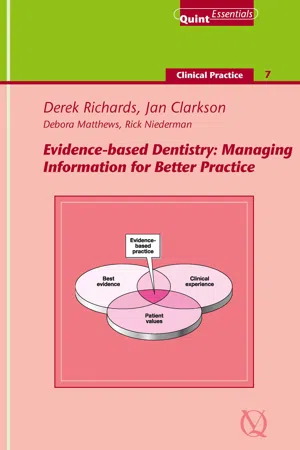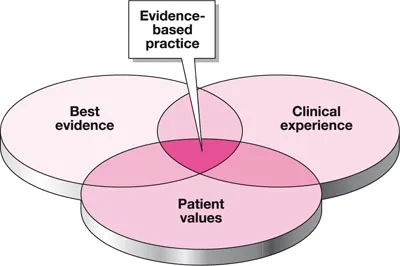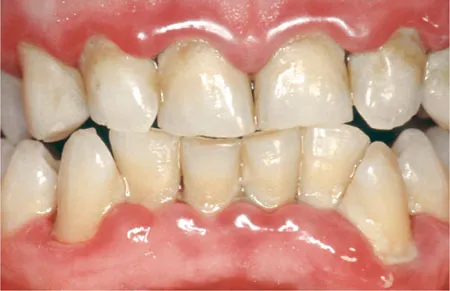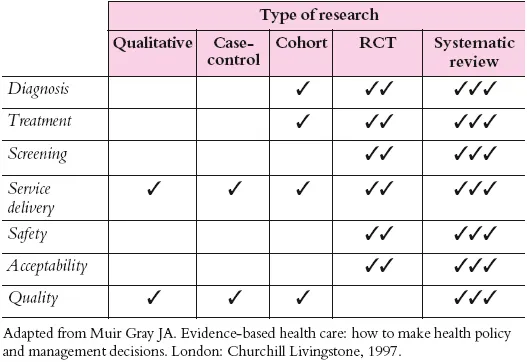
This is a test
- 156 pages
- English
- ePUB (mobile friendly)
- Available on iOS & Android
eBook - ePub
Evidence-Based Dentistry
Book details
Book preview
Table of contents
Citations
About This Book
In the modern world, new information is constantly being produced that affects patient treatment, and clinicians need the skills to evaluate and apply pertinent information to their practice. This book outlines the key concepts of evidence-based dentistry and illustrates the process from analysis to implementation using relevant clinical examples.
Frequently asked questions
At the moment all of our mobile-responsive ePub books are available to download via the app. Most of our PDFs are also available to download and we're working on making the final remaining ones downloadable now. Learn more here.
Both plans give you full access to the library and all of Perlego’s features. The only differences are the price and subscription period: With the annual plan you’ll save around 30% compared to 12 months on the monthly plan.
We are an online textbook subscription service, where you can get access to an entire online library for less than the price of a single book per month. With over 1 million books across 1000+ topics, we’ve got you covered! Learn more here.
Look out for the read-aloud symbol on your next book to see if you can listen to it. The read-aloud tool reads text aloud for you, highlighting the text as it is being read. You can pause it, speed it up and slow it down. Learn more here.
Yes, you can access Evidence-Based Dentistry by Derek Richards in PDF and/or ePUB format, as well as other popular books in Medicine & Dentistry. We have over one million books available in our catalogue for you to explore.
Information
Chapter 1
Introduction
Aim
The aim of this chapter is to define evidence-based dentistry and outline the five-stage evidence-based method.
Outcome
After completing this chapter readers will be familiar with the definition of evidence-based dentistry and the five stages.
What is Evidence-based Dentistry (EBD)?
Evidence-based dentistry is a method for rapidly aggregating, distilling and implementing the best evidence in clinical practice (Sackett et al., 1996; Straus et al., 2005). Successfully accomplishing this requires the integration of:
- the best clinical evidence
- clinical judgement, together with
- patient values and circumstances, to improve healthcare (Fig 1-1).

Fig 1-1 Evidence-based practice.
Delegates at the second international conference of evidence-based healthcare teachers in Sicily discussed the need for a clear definition of what constitutes evidence-based practice (EBP), what skills are needed to practise in an evidence-based manner and a curriculum that outlines the minimum requirements for training health professionals in EBP. They produced the Sicily consensus statement on evidence-based practice (see Dawes et al., 2005).
Is EBD New?
The ideas associated with the evidence-based approach have been around a long time. In the second edition of their textbook, Sackett et al. (2000) linked their ideas with post-revolutionary Paris, while Sir Iain Chalmers, in a lecture to celebrate International Clinical Trials Day in 2006 (see Chalmers, 2006), suggested origins in ancient China or the Middle East.
This delay in uptake of the most effective treatments was one of the driving forces behind the development of the evidence-based approach to healthcare. This current trend developed from a group based in McMaster University in Canada who introduced the term evidence-based medicine in 1992.
Dentists will recognise the picture of bleeding gums (Fig 1-2). Scurvy, one of its more unusual causes, is a good example of an evidential approach and of the challenges in getting evidence-based treatments adopted as common practice (Box 1-1).

Fig 1-2 Periodontal disease.
Box 1-1 James Lind and scurvyLind, in his treatise of the scurvy (Lind, 1753), summarises his trial conducted on 12 patients:“On 20th May 1747, I took twelve patients in the scurvy, on board the Salisbury at sea. Their cases were as similar as I could have them. They all in general had putrid gums, the spots and lassitude, with weakness of their knees. They lay together in one place, being a proper apartment for the sick in the fore-hold; and had one diet common to all.”Two sailors were allocated to each of:
Best Evidence
Early in the development of EBD the approach was criticised for focusing on evidence from randomised controlled trials and systematic reviews of evidence. There has been a shift in this position, with the clear view that what is required is evidence from the most appropriate study design to answer the clinical question being posed (Table 1-1).
Table 1-1 Study designs to answer clinical questions

Early systematic reviews in healthcare were focused on randomised controlled trials (RCTs) but the past decade has seen development of systematic review methodology for a range of study designs. The availability of high-quality systematic reviews is increasing through the work of groups like the Cochrane and Campbell Collaborations and increased use of these reviews will improve the quality of evidence available for decision-making. The availability of these reviews means that information about effective treatment is more readily available; this can bring benefit to patients and potentially save time and money by providing effective treatments and abandoning ineffective ones.
Clinical Expertise
Clinical expertise is a key element and this can and will vary significantly. As with most things in life, experience in providing one type of treatment or using certain materials, procedures or equipment will vary. In addition, while you may have experience of using particular materials, procedures or equipment, they may not always be available in every circumstance. It is for these reasons that clinical experience is an important element in making evidence-based decisions.
Patient Values
Patients’ values play a crucial role in evidence-based practice, but articulating these values is a challenge for some of them. It is also important to recognise that there are three competing value systems for the three stakeholders involved in clinical decisions (the patient, the dentist, and the third-party payer – be it the state or an insurer). Recognising this, and engaging patients in simultaneous discussion about values, evidence and clinical judgement will help improve the quality of the provided care.
Why an Evidence-based Approach?
The main reason to implement EBD is to improve the quality of care. The introduction of clinical audit and peer review and the move towards lifelong learning have been drivers for change within healthcare. They have been coupled with an increasing focus on the quality and consistency of healthcare provision and a desire to avoid unnecessary treatment.
Another factor has been the increasing involvement of patients in healthcare decision-making. This has been welcomed by the profession for the most part. The driver for this (and one of the main drivers for the introduction of EBD) is the enormous amount of information that is available today. This is in the form of books, journals and the internet.
The almost ubiquitous availability of the internet and general ease of access makes this both a useful and a powerful tool. For example, if you type the word “dental” into the search engine Google, you get about 226,000,000 hits: 4,100,000 for “caries” and 8,520,000 for “dental implants”.
What Is an Evidence-based Approach?
Essentially, EBP is a set of methods for rapidly aggregating, distilling and implementing the best clinical information in clinical practice. The approach consists of five steps (the 5 As). Each stage has been subjected to trials of teaching effectiveness.
The evidence-based method
| 1. Asking answerable questions | (ASK) |
| 2. Searching for the best evidence | (ACQUIRE) |
| 3. Critically appraising the evidence | (APPRAISE) |
| 4. Applying the evidence | (APPLY) |
| 5. Evaluating the outcome | (ASSESS) |
While most clinicians will not engage in developing evidence, they can relatively easily become effective users of evidence. This book provides an introduction to EBP and the techniques with which to apply it to your practice.
However, it should be emphasised that EBP is an active problem-based approach to acquiring and developing knowledge that needs to be practised. It is therefore best learned and appreciated in small group workshops and active participation.
Key Points
Evidence-based practice:
- is a structured approach for clinical decision...
Table of contents
- Cover
- Title Page
- Copyright Page
- Table of Contents
- Foreword
- Preface
- Acknowledgements
- Chapter 1: Introduction
- Chapter 2: Finding Answers
- Chapter 3: Clinical Scenarios
- Chapter 4: Evidence-based Guidelines
- Chapter 5: Cochrane Reviews
- Chapter 6: Systematic Reviews
- Chapter 7: Individual Studies
- Chapter 8: Study Appraisal: Randomised Controlled Trials
- Chapter 9: Study Appraisal: Cohort Studies
- Chapter 10: Study Appraisal: Diagnostic Studies
- Chapter 11: Study Appraisal: Qualitative Studies
- Chapter 12: Keeping Up To Date
- Chapter 13: Sources of Evidence/Information
- Appendix
- Glossary